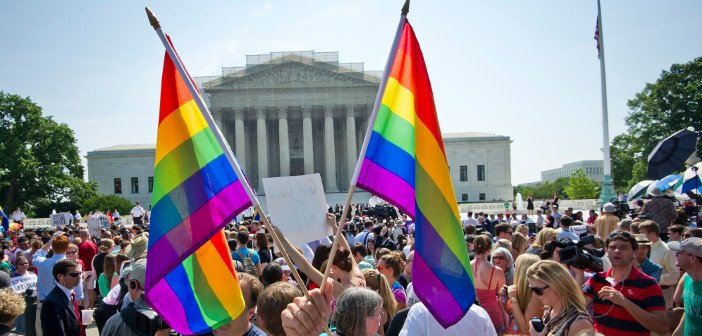Are Schools Becoming More LGBTQ-Inclusive?
In general, public schools have to follow the same set of overall guidelines to ensure the appropriate education of children everywhere. However, each school is its own entity, boiling with the energy and attitudes of the people inside of it. It’s influenced by its students, teachers, and even the ideas of its community. For this reason, it’s difficult to make generalisations about schools, because each one is very different.
However, it is helpful to dive into this question for the sake of students, teachers, and parents everywhere. The hope is that yes, schools are becoming more LGBTQ-inclusive, but the current social climate makes that question very heavy. Answering that question involves diving into social awareness, how the social climate changes that awareness, why it can be a struggle to be inclusive, and the LGBTQ protections in place in an education setting.
Increased Social Awareness
With each generation, social awareness seems to increase. Social issues like women’s equality, civil rights, and LGBTQ rights have come so far with each year and each generation’s growing social awareness. This is immensely helpful for schools becoming more LGBTQ-inclusive. Educators are becoming more aware of the importance in creating a safe space for each student, regardless of their LGBTQ status. However, in 2018, according to a study by the Human Rights Campaign, only 26 percent of LGBTQ teens say they always feel safe in their school classrooms. Only five percent say all of their teachers and school staff are supportive of LGBTQ people.
In many ways, social awareness for LGBTQ issues is growing, but many students still feel unsafe at school. Bullying is a large problem in the LGBTQ community, and it can lead to a multitude of problems for students including depression and anxiety. School counsellors play a big role in creating an LGBTQ-inclusive environment at school by helping to create peer-led clubs, developing anti-bullying curriculum, and encouraging staff to get further training in this area.

A Polarising Social Climate
We are in a unique part of history because, generally, each generation becomes more socially aware. However, our current social climate has never been more polarising. Politics, technology, and unfiltered access to both false and accurate information all play a role in our current climate. The quest for LGBTQ rights have long been a liberal dream, so some conservatives may lump LGBTQ people and their issues as something that they are against, despite the growing acceptance of LGBTQ equality.
This piece is important because it plays a role in each public entity’s viewpoints. Each educational institution should be accepting of each student regardless of their race, religion, or LGBTQ status, but the truth is that that may not be the case. Discrimination still happens from a healthcare standpoint and the supreme court recently allowed a federal ban on transgender military personnel, so clearly the issue is still prominent and not always headed in the right direction.
The Struggle to Be Inclusive
What does it mean for a school to be more LGBTQ-inclusive? It means teaching LGBTQ curriculum, creating a safe atmosphere for LGBTQ children, being supportive of a student’s LGBTQ status, being serious about bullying of any kind, and focusing on an open, loving environment for each child. This should be easy enough to implement, but many schools struggle to be more inclusive.
For one, administrators may not be supportive if a teacher wants to include LGBTQ-friendly topics and procedures. Similarly, parent pushback is a growing problem in such a polarising social climate. Even in the most liberal areas, parents may complain if they find out their child is learning about LGBTQ topics. Some teachers may not know how to make their classroom more inclusive, or feel uncomfortable about such a controversial topic. Either way, creating an inclusive classroom isn’t something every teacher is doing.

A Lack of LGBTQ Protections
According to a 2015 report conducted by GLSEN, just one in 10 districts in the U.S. had an anti-bullying policy that includes explicit protections for LGBTQ students. Even in states with anti-bullying laws, over a quarter of those districts did not have district anti-bullying policies. In seven states, there are laws prohibiting the “promotion of homosexuality,” limiting a school’s ability to teach inclusive sex education, or LGBTQ-inclusive materials.
Many LGBTQ-facing industries are working to be more inclusive to help students with issues as a result of unfair treatment. This is important due to the amount of LGBTQ students experiencing mental health struggles as a result of any discrimination. For instance, the social work field is teaching future social workers about this gap in LGBTQ inclusivity in our education system in order to help students.
Are schools becoming more LGBTQ-inclusive? That’s hard to measure, but the general trend is looking positive. Does that mean that schools are completely inclusive? No. However, it’s worth mentioning that many schools may be much more inclusive than others. Be sure to talk to a school counsellor, ask about a school’s bullying policies, or check to see if there are any LGBTQ groups on campus to check on a school’s inclusivity status. There is a long way to go for our education system to protect each child, but the hope is that each generation will get better at being more socially aware, creating a safe world for the LGBTQ students of the future.
